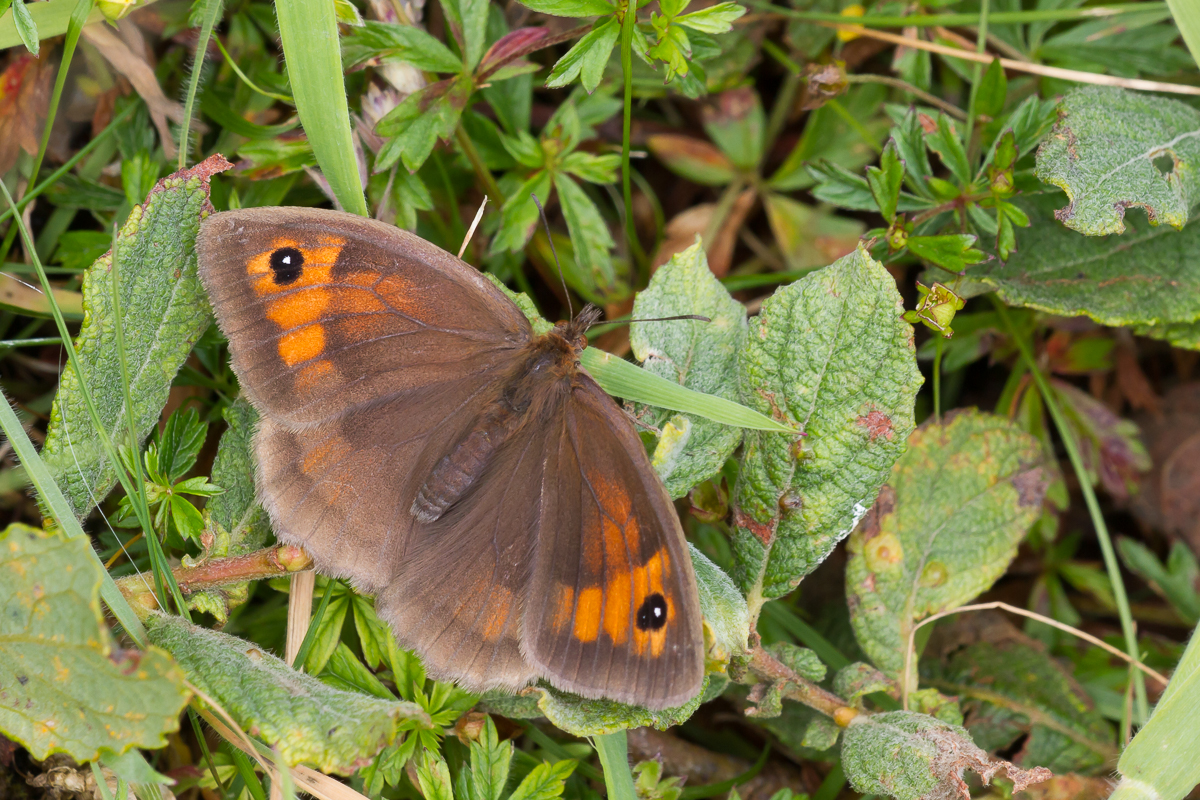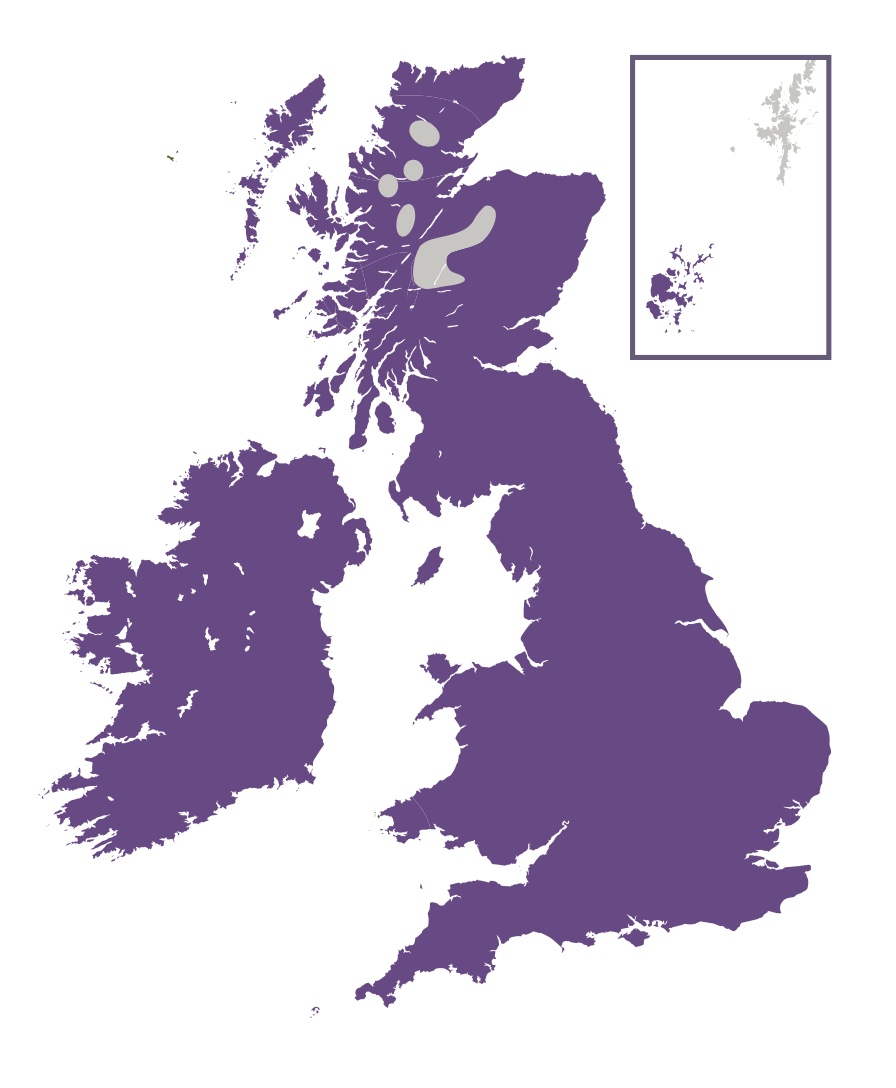
Photo © Peter Eeles
The Meadow Brown is one of our commonest and most widespread butterflies, and a familiar sight throughout the summer months. This species can be found in all parts of the British Isles, with the exception of the most mountainous regions and Shetland. This is a highly variable species with four named subspecies found in the British Isles, although the differences between them are often subtle.
The male is the most active of the two sexes and finds a mate either by patrolling, or by investigating any butterfly that flies past his perch. Females, on the other hand, are normally only active when nectaring or egg-laying and spend most of their time resting near the ground. Here they sit camouflaged, with wings closed and forewings tucked beneath the hindwings. When disturbed, they raise their forewings to reveal a large eye spot that must appear somewhat threatening to any predator.
Both sexes typically roost on low vegetation, within tall grass clumps, but may also use bushes, trees and hedges. Early morning is a good time to see this species, as it sits with its wings outstretched, warming up in the early morning sun. Once warmed up the adults take to the wing and will even fly in dull weather, including light drizzle, so long as the temperature is sufficiently high. Both sexes are avid nectar feeders, and use a variety of nectar sources, especially Knapweed, Thistle and Bramble.
Courtship between male and female is brief. The male showers the female with scent scales from his sex brands which act as an aphrodisiac that seduces the female and mating quickly follows. After a couple of days the female starts to lay her batch of several hundred eggs. For some unexplained reason, this species occasionally pairs with other species, such as the Gatekeeper, although no offspring result.

The butterfly can be found in almost any grassy habitat, especially grasslands where the sward is of a medium height, where populations can reach thousands. Even in heavily-grazed meadows, the butterfly can usually be found around the field margins. Typical habitats include grassland, woodland rides, field margins, hedgerows, road verges and even overgrown gardens.
Adults feed primarily on knapweeds (Centaurea spp.) and thistles (Carduus spp. and Cirsium spp.). brambles (Rubus spp.), buttercups (Ranunculus spp.), Common Fleabane (Pulicaria dysenterica), Devil's-bit Scabious (Succisa pratensis), Hemp-agrimony (Eupatorium cannabinum), ragworts (Jacobaea spp.), Selfheal (Prunella vulgaris), Wild Marjoram (Origanum vulgare), Wild Privet (Ligustrum vulgare), Wild Teasel (Dipsacus fullonum) and Yarrow (Achillea millefolium) are also used.
The primary larval foodplants are bents (Agrostis spp.), Cock's-foot (Dactylis glomerata), Downy Oat-grass (Avenula pubescens), False Brome (Brachypodium sylvaticum), fescues (Festuca spp.) and meadow-grasses (Poa spp.).
